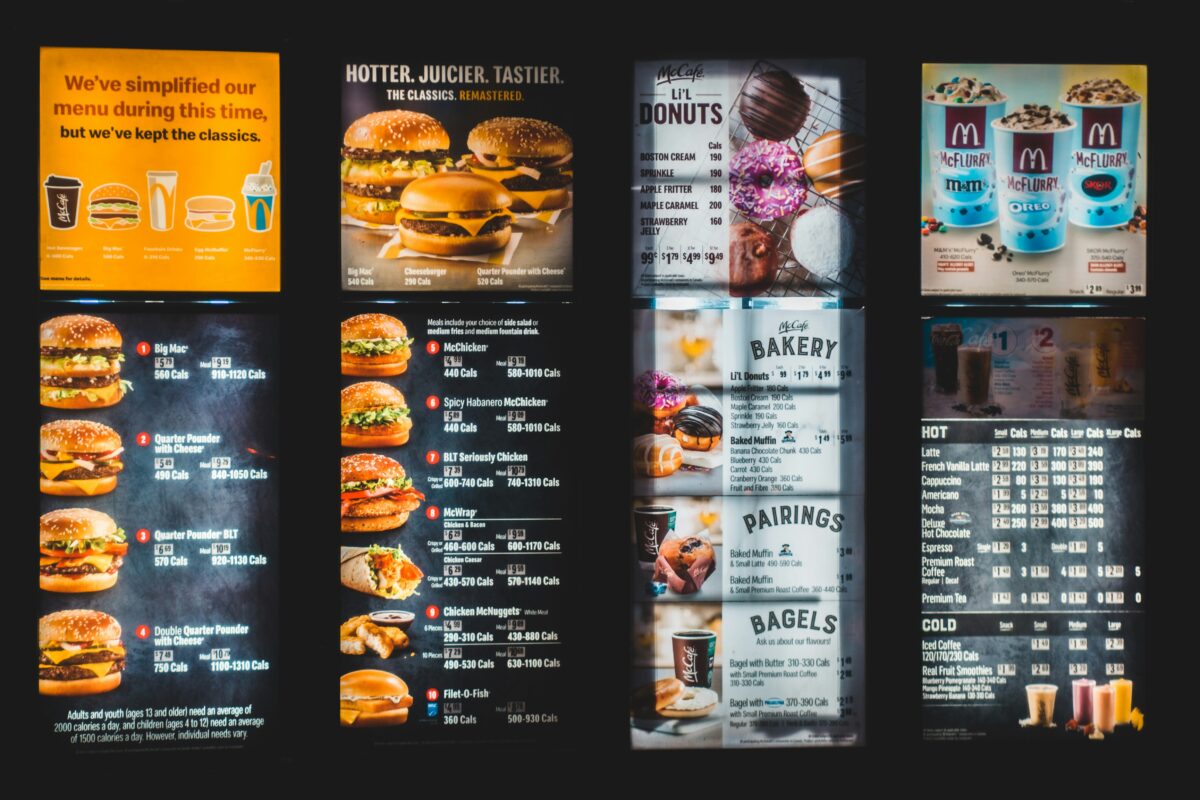From Menu Boards to Customer Insights: Unleashing the Power of Restaurant Digital Signage

In the ever-evolving landscape of the restaurant industry, staying ahead of the curve is imperative for success. With consumers increasingly turning to digital platforms for their dining needs, restaurants are finding innovative ways to enhance their customer experience. One such avenue is the adoption of digital signage, transforming traditional menu boards into dynamic, interactive displays that not only showcase menu items but also provide valuable insights into customer behavior and preferences. In this blog, we explore the multifaceted benefits of restaurant digital signage and how it is reshaping the way food establishments engage with their patrons.
The Evolution of Menu Boards
Gone are the days of static, printed menu boards that offer limited flexibility and fail to capture attention. Restaurant digital signage represents a paradigm shift, offering dynamic content that can be easily updated in real-time. Whether it’s promoting daily specials, highlighting seasonal offerings, or incorporating multimedia elements such as videos and animations, digital menu boards provide a visually engaging platform to showcase the diverse array of culinary delights on offer.
Furthermore, the interactive nature of digital signage allows for enhanced customization and personalization. By leveraging customer data and analytics, restaurants can tailor their menu displays to cater to individual preferences, dietary restrictions, and even time-of-day preferences. This level of targeted marketing not only enhances the overall dining experience but also fosters customer loyalty and satisfaction.
Enhancing Customer Engagement
Beyond merely displaying menu items, restaurant digital signage serves as a powerful tool for enhancing customer engagement. Interactive touchscreen displays enable patrons to browse menu options, customize their orders, and even place their orders directly from the digital interface. This streamlined approach not only expedites the ordering process but also empowers customers to explore menu offerings at their own pace, ultimately leading to more informed purchasing decisions.
Moreover, digital signage can serve as a conduit for communication between the restaurant and its customers. Whether it’s conveying important announcements, soliciting feedback through surveys, or showcasing user-generated content and reviews, digital displays facilitate two-way communication, fostering a sense of community and belonging among patrons.
Driving Operational Efficiency
In addition to elevating the customer experience, restaurant digital signage offers tangible benefits in terms of operational efficiency. By centralizing menu management through a digital platform, restaurants can easily update menu items, pricing, and promotions across multiple locations with the click of a button. This not only eliminates the need for costly and time-consuming reprinting of static menus but also ensures consistency and accuracy across all touchpoints.
Furthermore, digital signage can be integrated with backend systems such as inventory management and POS systems, allowing for seamless synchronization of menu changes and inventory levels. This real-time data visibility enables restaurants to optimize supply chain management, reduce waste, and maximize profitability.
Harnessing the Power of Data Analytics
Perhaps one of the most compelling aspects of restaurant digital signage is its ability to generate actionable insights through data analytics. By leveraging technologies such as RFID, NFC, and beacon sensors, restaurants can capture valuable data on customer behavior, such as dwell time, popular menu items, and peak hours of activity.
This wealth of data can be analyzed to gain deeper insights into customer preferences, demographics, and purchasing patterns. Armed with this knowledge, restaurants can fine-tune their menu offerings, tailor promotional campaigns, and optimize operational workflows to better meet the needs and expectations of their target audience.
Future Trends and Innovations
As technology continues to evolve, so too will the capabilities of restaurant digital signage. Emerging trends such as augmented reality (AR) and artificial intelligence (AI) promise to further enhance the interactive and immersive nature of digital displays, offering innovative ways to engage with customers and deliver personalized experiences.
Moreover, the rise of IoT (Internet of Things) connectivity opens up a world of possibilities for seamless integration between digital signage, mobile devices, and other smart technologies. Imagine a scenario where customers can place orders from their smartphones and have them seamlessly transmitted to the kitchen, all facilitated through interconnected digital touchpoints.
Conclusion
In conclusion, restaurant digital signage represents a powerful convergence of technology and hospitality, revolutionizing the way food establishments interact with their customers. From dynamic menu displays to actionable data insights, the potential benefits are vast and far-reaching. By embracing this transformative technology, restaurants can enhance customer engagement, drive operational efficiency, and gain a competitive edge in an increasingly digital world. As the industry continues to evolve, those who harness the power of restaurant digital signage will undoubtedly position themselves for long-term success in the culinary landscape of tomorrow.









